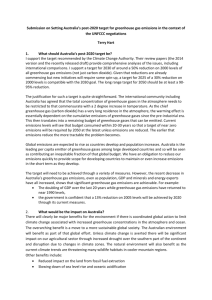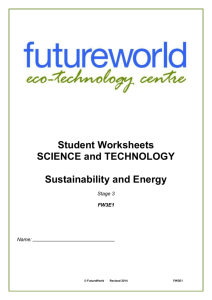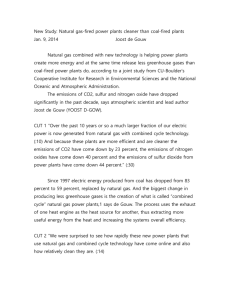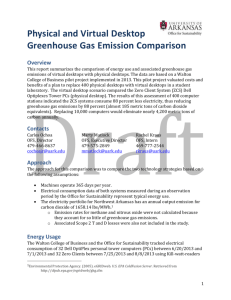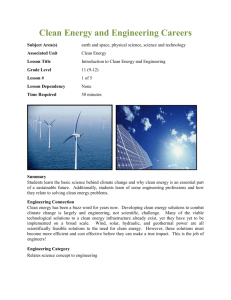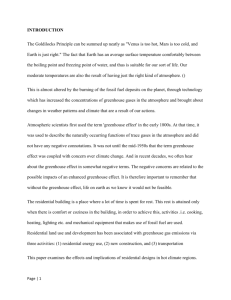WhyConcerned
advertisement
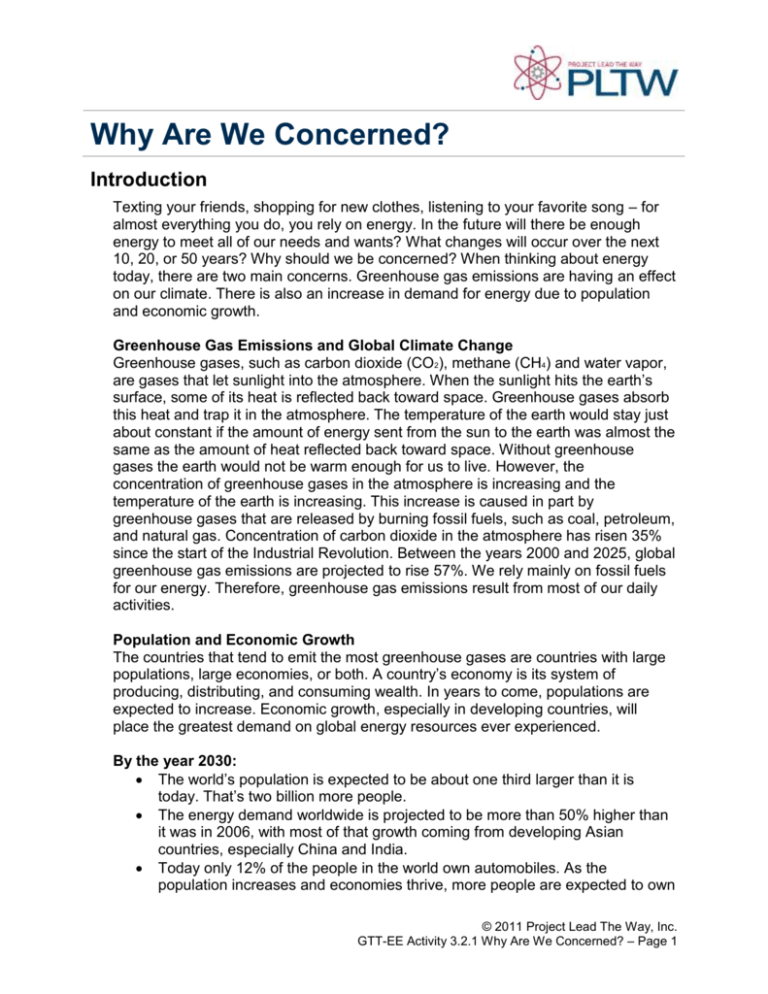
Why Are We Concerned? Introduction Texting your friends, shopping for new clothes, listening to your favorite song – for almost everything you do, you rely on energy. In the future will there be enough energy to meet all of our needs and wants? What changes will occur over the next 10, 20, or 50 years? Why should we be concerned? When thinking about energy today, there are two main concerns. Greenhouse gas emissions are having an effect on our climate. There is also an increase in demand for energy due to population and economic growth. Greenhouse Gas Emissions and Global Climate Change Greenhouse gases, such as carbon dioxide (CO2), methane (CH4) and water vapor, are gases that let sunlight into the atmosphere. When the sunlight hits the earth’s surface, some of its heat is reflected back toward space. Greenhouse gases absorb this heat and trap it in the atmosphere. The temperature of the earth would stay just about constant if the amount of energy sent from the sun to the earth was almost the same as the amount of heat reflected back toward space. Without greenhouse gases the earth would not be warm enough for us to live. However, the concentration of greenhouse gases in the atmosphere is increasing and the temperature of the earth is increasing. This increase is caused in part by greenhouse gases that are released by burning fossil fuels, such as coal, petroleum, and natural gas. Concentration of carbon dioxide in the atmosphere has risen 35% since the start of the Industrial Revolution. Between the years 2000 and 2025, global greenhouse gas emissions are projected to rise 57%. We rely mainly on fossil fuels for our energy. Therefore, greenhouse gas emissions result from most of our daily activities. Population and Economic Growth The countries that tend to emit the most greenhouse gases are countries with large populations, large economies, or both. A country’s economy is its system of producing, distributing, and consuming wealth. In years to come, populations are expected to increase. Economic growth, especially in developing countries, will place the greatest demand on global energy resources ever experienced. By the year 2030: The world’s population is expected to be about one third larger than it is today. That’s two billion more people. The energy demand worldwide is projected to be more than 50% higher than it was in 2006, with most of that growth coming from developing Asian countries, especially China and India. Today only 12% of the people in the world own automobiles. As the population increases and economies thrive, more people are expected to own © 2011 Project Lead The Way, Inc. GTT-EE Activity 3.2.1 Why Are We Concerned? – Page 1 automobiles. Almost all of the energy used to power automobiles today comes from petroleum. However, it is not likely that petroleum alone is going to be able to supply all of the world’s growing automotive energy needs. We must find a way to meet the demand for more energy. Yet we also must address long-term concerns about the environment. In this activity you will graph the past, present, and predicted future use of our energy sources. Equipment Evernote Computer with Internet access and spreadsheet program Procedure Use the Internet to research and then create appropriate graphs to answer the following questions. 1. How has the consumption of energy per person changed over the last 50 years? 2. How has the percentage of energy we import from other countries changed in the last 50 years? 3. How has the mix of energy sources changed in the last 50 years in production and consumption? Consider renewable, exhaustible, and inexhaustible sources. 4. Use your graphs to answer the questions in the conclusion section below. Conclusion 1. Describe a trend that you notice in your graphs. 2. Was there a historical event that affected the trend you just described? 3. Why do you think CO2 emissions have been increasing since the industrial revolution? © 2011 Project Lead The Way, Inc. GTT-EE Activity 3.2.1 Why Are We Concerned? – Page 2 4. If we continue to meet our energy needs with fossil fuels, what might be different about the way we live in 2030 and why? 5. How would the implementation of a Smart Grid affect our lives? © 2011 Project Lead The Way, Inc. GTT-EE Activity 3.2.1 Why Are We Concerned? – Page 3





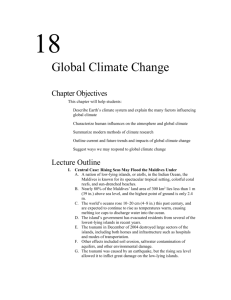


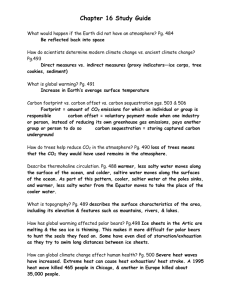

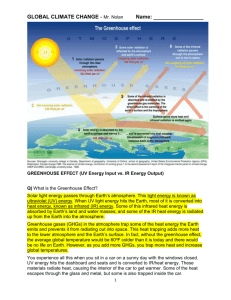
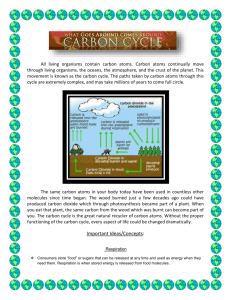
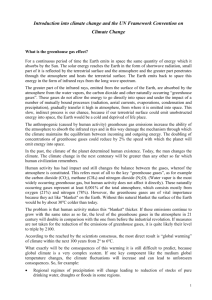


![Greenhouse_gasses_definitions[1]](http://s3.studylib.net/store/data/006720950_1-a15d13661c201618524ef38bb5acce84-300x300.png)
